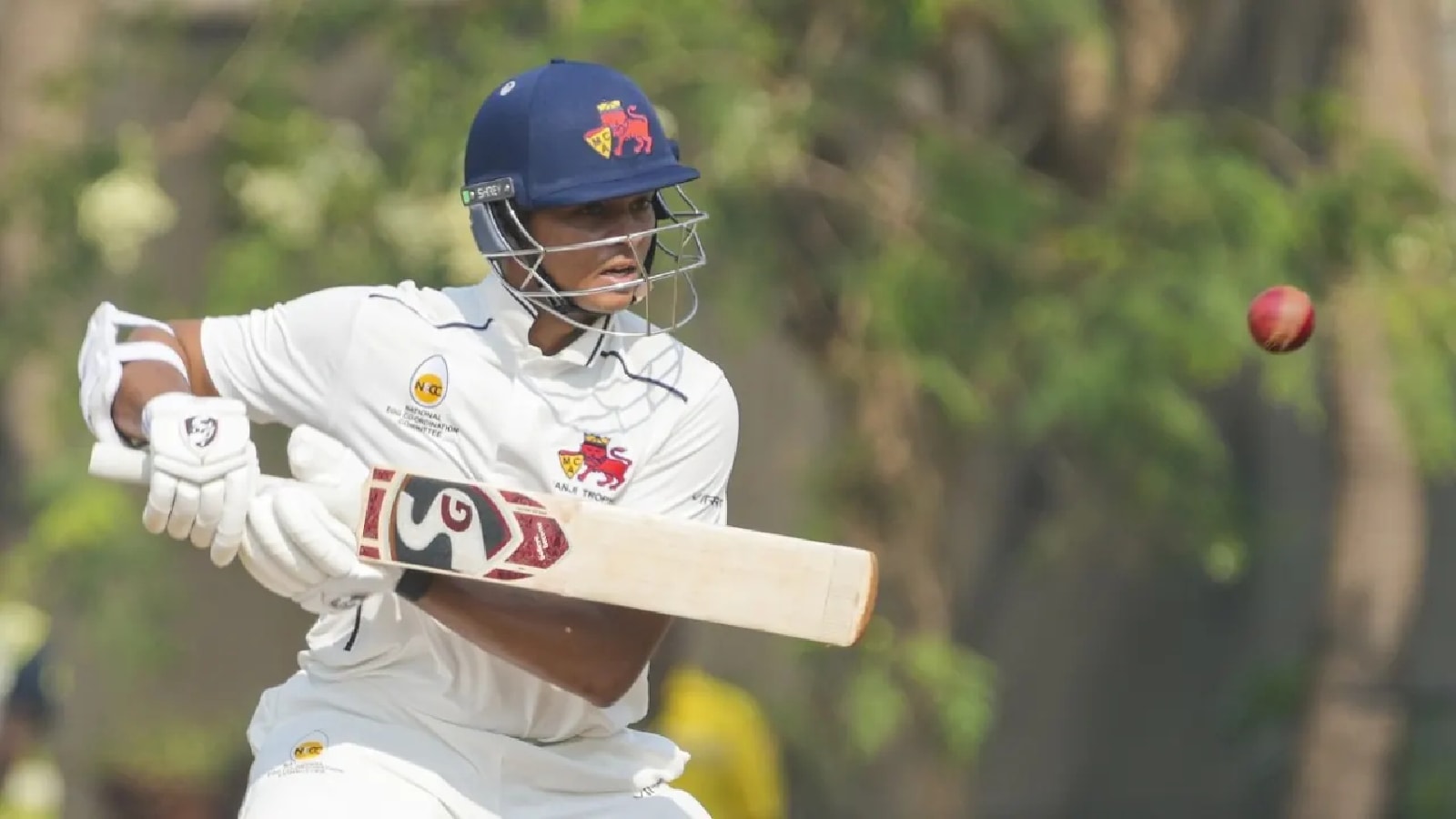ARTICLE AD BOX
 Australia's Josh Hazlewood, center, appeals unsuccessfully for the wicket of India's Shubman Gill, right, during their T20 cricket match in Melbourne, Australia, Friday, Oct. 31, 2025. (James Ross/AAP Image via AP)
Australia's Josh Hazlewood, center, appeals unsuccessfully for the wicket of India's Shubman Gill, right, during their T20 cricket match in Melbourne, Australia, Friday, Oct. 31, 2025. (James Ross/AAP Image via AP)
Josh Hazlewood’s first over of the evening in Melbourne was like the classical intro of a horror movie. It gave the audience, and Shubman Gill, the chills and shivers. The first ball slithered wickedly onto his pads in front of his stump, the umpire promptly raised his index finger, only for Gill’s half-hearted review judging the ball to sail over the leg-stump. The next ball bent away to the bemusement of Gill’s quivering bat. The next ball cracked his helmet, the batsman late into a hesitant pull. Gill was living a nightmare in the grandest cricketing theatre in the world. Nearly a lakh spectators stood frozen in the horror-script masterminded by Hazlewood.
The Indian batsman survived the over, but not the spell. Like a fear-stricken man in a haunted house stumbling onto an open door out of his crucible of terror, his eyes lit up at the sight of a juicy half-volley, wide and straight, the house-break ball. But in his endeavour to loft the ball, with the extension of the bat, he lost control of the stroke and ended up skewing it to mid-off. A collapse ensued; in the space of 16 balls, India lost four wickets for 12 runs, Sanju Samson to the simple double bluff off Nathan Ellis; Gill, Suryakumar Yadav and Tilak Varma to the wiles of Hazlewood. The ball that ejected Surya angled in and shaped away, off hard length, a quintessential Test match deception. The pace, bounce and the unwavering discipline of Hazlewood confounded Tilak, hero of the Asia Cup final last month. He walked down the track and left a short ball from him, but the next ball was fuller and seamed away from him. It coaxed the top-edge of his tilted bat.
From the shambles of 32 for 4, India never recovered, despite the heroics of Abhishek Sharma and resoluteness of Harshit Rana. The hosts surpassed the target of 126 in 13.2 overs with four wickets in hand, albeit with late jitters that saw them crumble from 87 for 1 to 112 for 4. But the narrative was primarily about two men who have traced contrasting trajectories in T20s to become their team’s most potent weapon. Abhishek is the natural; Hazlewood the outlier. Abhishek burst into the format as though he was born to play its heavy-metal riffs. He is the super-modern T20 batsman, unafraid to skip down the track to the first ball from the new-ball armed seamer. Sixes roll off the blade faster than cheques from a gambler in a Las Vegas casino. Hazlewood is the miserly farmer, who saves every penny for the days of rough weather. It’s the beauty of the game that it could give space for both to flourish.
Josh Hazlewood pulled off a stunning spell to dismantle India at the MCG.
Watch every ball: https://t.co/gcg69l3gtp pic.twitter.com/lRtz8f6MFs
— cricket.com.au (@cricketcomau) October 31, 2025
Until 2022, Hazlewood was labelled an anachronism. He made his T20 debut in 2013, but in the next nine years, played only nine games. He barely set paddles wagging on the auction tables. He has played roughly the same amount of T20 and first-class games (127 and 118). In the franchise circuit, he has turned up in 64 games for different franchises. But ask contemporary batsmen, in club or county circuit, they would testify the dread his simple method instigates. He does not possess blinding pace, or a bagful of variations, but he hits nagging lengths, difficult for gnarled red-ball openers as well as audacious T20 flashers.
Every batsman knows what he does, he seams the ball both ways, subtly interchanges his lengths, pace and release points, possess a lethal bouncer, a good cutter and an accurate yorker. Just the basic tricks in a modern resume. But the beauty, and effectiveness lies in how he employs those.
“You often find guys with strange actions or very fast arms have good changes of pace because they can deceive you, but for a rhythmical bowler like myself changes of pace are going to be hard. It’s just subtle changes here and there,” he had once said. But those tools sufficed to make him the highest ranked bowler in T20Is last year as well as the catalyst of RCB’s maiden IPL title triumph. “I don’t complicate myself, going behind things I can’t do,” he would say.
Percentage strokes
Abhishek could repeat the line, except that his bat could do an awful lot of things. He doesn’t complicate himself, sticks to his percentage strokes and bats with bewildering clarity. Every wagon wheel of him looks the same with a flurry of lines populating the region between third man and mid-off. Like a magnet pulling every piece of iron into its web of gravity, he makes bowlers veer onto the off-side, where his bat scythes the runs. As much as 60 percent of his runs (41 off 68) were wrought through his favourite side. Eight of his 10 boundaries too were fetched through the zone. He revelled in the extra bounce the MCG offered, harnessing the pace to glide fours past the third man. He played Hazlewood cautiously, managing only six runs off four balls, four off those arriving streakily. En route resurrecting India, he displayed his rebuilding nous and his composure to stabilise the innings.
.@IamAbhiSharma4 leads from the front with a blazing half-century, taking the Aussies head-on in true Skyball fashion! 💥
Fearless intent, clean hitting, and total command at the crease! 🚀#AUSvIND 👉 2nd T20I | LIVE NOW 👉 https://t.co/mq9j8bivd0 pic.twitter.com/bcAUdN2kyw
— Star Sports (@StarSportsIndia) October 31, 2025
It is the deepest he had batted in a game, lasting till the 19th over. But he faced only 37 balls, chiefly due to Harshit Rana facing 33 balls off their 47-ball, 56-run stand. Their unusual alliance was the pillar of India’s innings, but it derailed Abhishek’s momentum. Rana’s 35 showed his heart for the fight but his inability to rotate strike (15 dot balls) stalled India as well as Abhishek. But after the meltdown, the blame falls squarely on Abhishek’s batting colleagues rather than Rana.
In the end, India were left wondering if they managed one more meaningful partnership, or if Rana and Jasprit Bumrah had shown more precision with the new ball.
Story continues below this ad
Bumrah, on the site of his series-defining exploits in 2019, was unusually wayward. Unplayable deliveries were interspersed with wide balls. Consequently, Australia stormed to 50 for no loss in four overs. The tone set, even a late-innings collapse did not pull India back into the game. In short, they did not have someone to produce a Hazlewood-kind of a first spell. That glorious chill-inducing T20 outlier.










 English (US) ·
English (US) ·